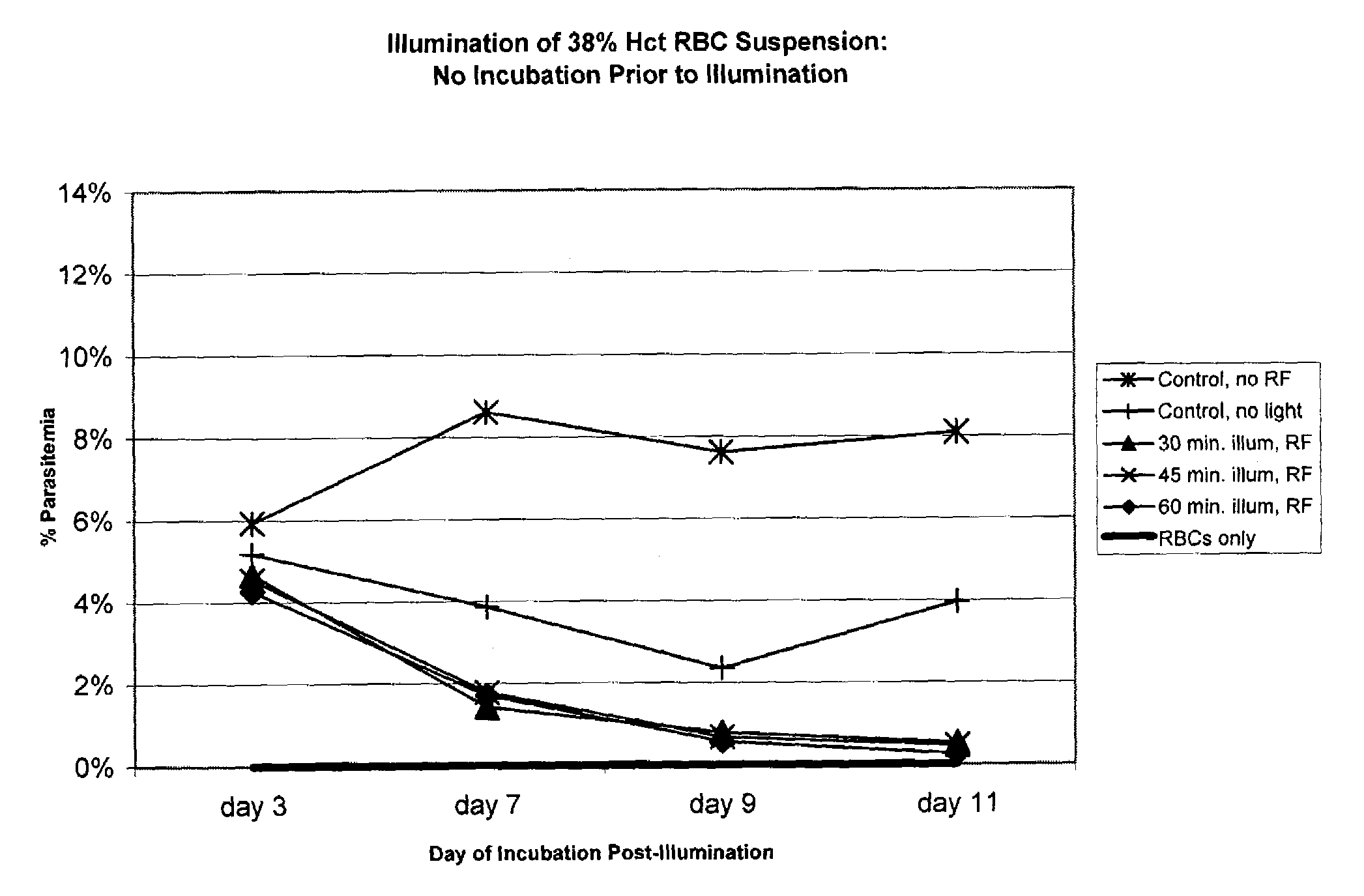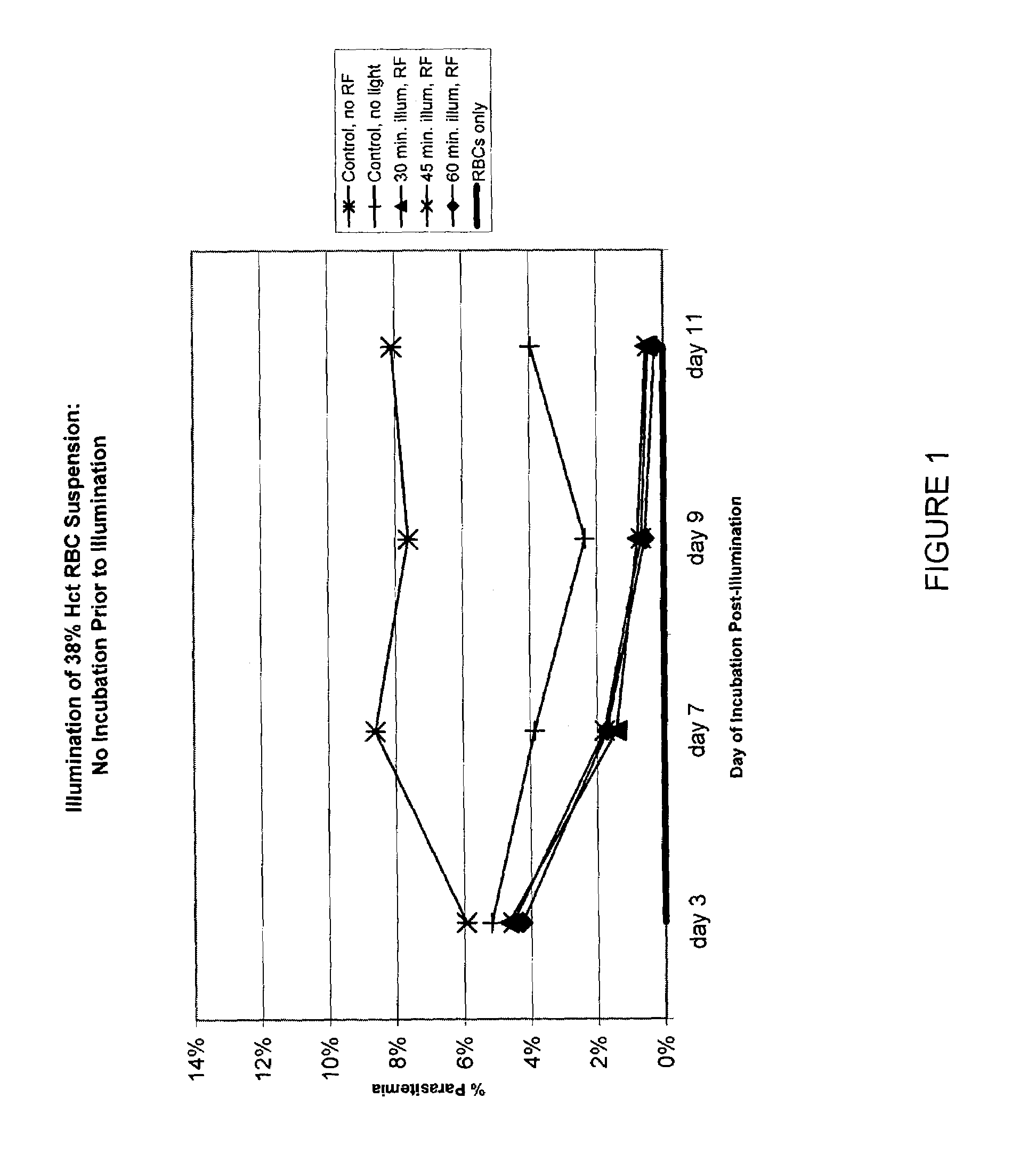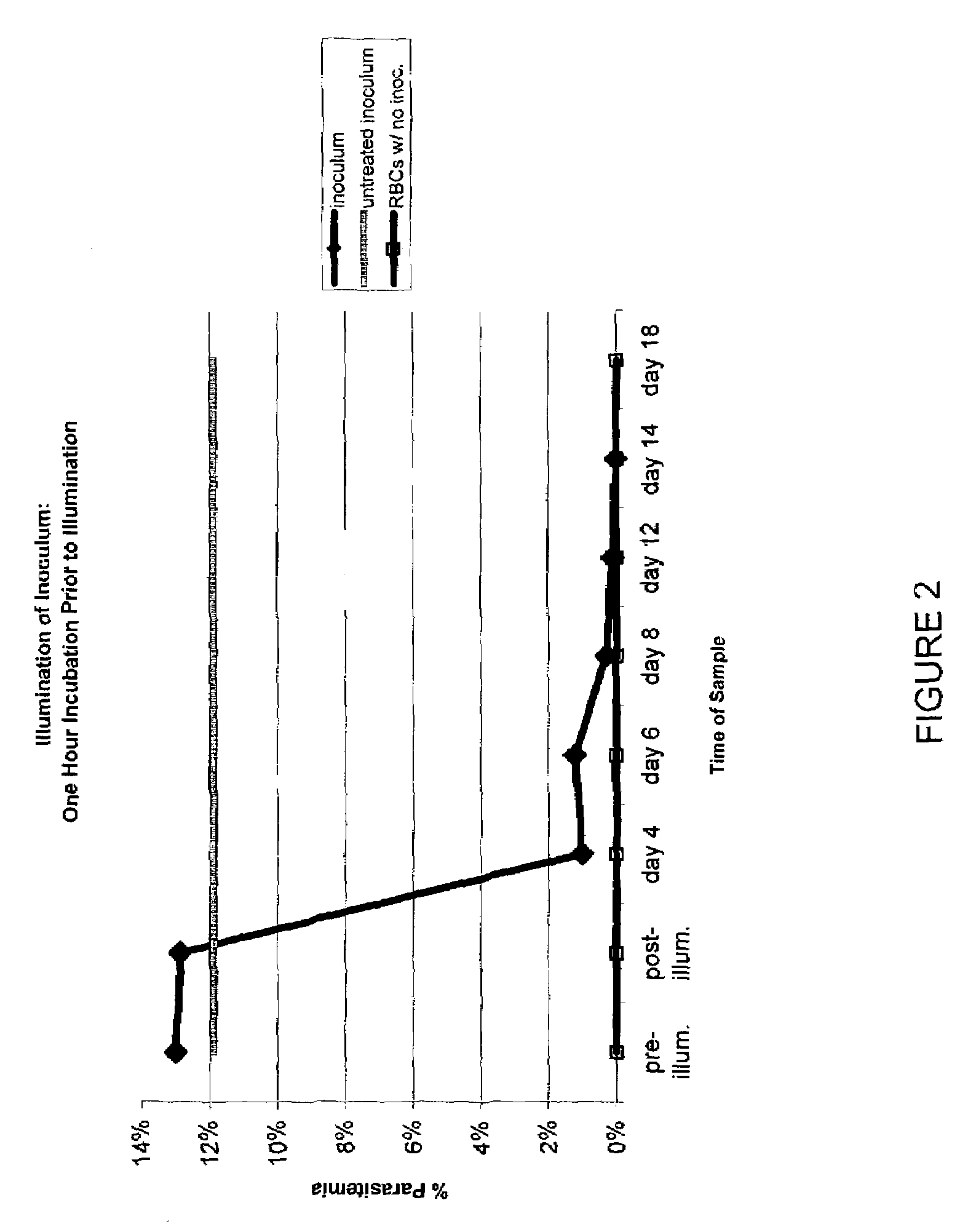Inactivation of West Nile virus and malaria using photosensitizers
- Summary
- Abstract
- Description
- Claims
- Application Information
AI Technical Summary
Benefits of technology
Problems solved by technology
Method used
Image
Examples
Embodiment Construction
[0128]The following applications are hereby incorporated by reference to the extent not inconsistent with the disclosure herewith: U.S. patent application Ser. No. 10 / 104,766, filed Mar. 21, 2002; U.S. patent application Ser. No. 10 / 247,262 filed Sep. 18, 2002; U.S. provisional application Ser. No. 60 / 368,778, filed Mar. 28, 2002; U.S. patent application Ser. No. 10 / 159,781, filed May 30, 2002; U.S. patent application Ser. No. 09 / 982,298, filed Oct. 16, 2001; U.S. patent application Ser. No. 10 / 328,717, filed Dec. 23, 2002; U.S. patent application Ser. No. 10 / 065,073, filed Sep. 13, 2002; U.S. patent application Ser. No. 09 / 962,029, filed Sep. 25, 2001; U.S. provisional application Ser. No. 60 / 353,223, filed Feb. 1, 2002; U.S. provisional application Ser. No. 60 / 355,393, filed Feb. 8, 2002; U.S. provisional application Ser. No. 60 / 377,697, filed May 3, 2002; U.S. patent application Ser. No. 10 / 325,402, filed Dec. 20, 2002; U.S. provisional application Ser. No. 60 / 353,319, filed Feb....
PUM
| Property | Measurement | Unit |
|---|---|---|
| Wavelength | aaaaa | aaaaa |
| Depth | aaaaa | aaaaa |
| Wavelength | aaaaa | aaaaa |
Abstract
Description
Claims
Application Information
 Login to View More
Login to View More - R&D
- Intellectual Property
- Life Sciences
- Materials
- Tech Scout
- Unparalleled Data Quality
- Higher Quality Content
- 60% Fewer Hallucinations
Browse by: Latest US Patents, China's latest patents, Technical Efficacy Thesaurus, Application Domain, Technology Topic, Popular Technical Reports.
© 2025 PatSnap. All rights reserved.Legal|Privacy policy|Modern Slavery Act Transparency Statement|Sitemap|About US| Contact US: help@patsnap.com



